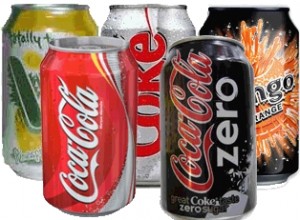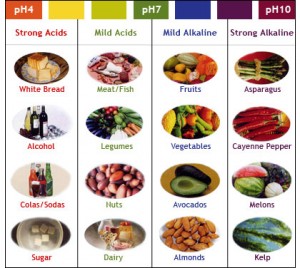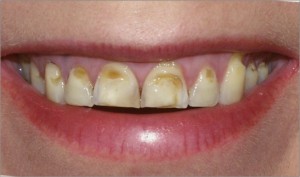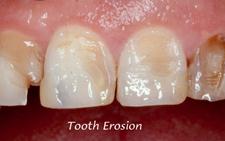Tag: oral health care
Blog posts, information and advice which mention Oral health
Do You Have a Higher Chance of Developing Tooth Decay?
Bad Breath Causes, Treatment and Prevention
Do you brush ‘Gangnam Style’?
Mouth Ulcers – causes, treatment and symptoms
Mouth Ulcers
Mouth ulcers are small painful sores that form in the mouth. The most common type is called aphthous or simple ulcers.
There are three main types of ulcers:
- Minor ulcers are small, non-scarring and usually heal without any treatment within two weeks.
- Major ulcers are 1cm or larger, have a raised border and can last from two weeks to several months. Usually only one or two appear at a time. They can be very painful and cause difficulty eating, are slower to heal and can leave scars.
- Herpetiform ulcers are multiple tiny sores that can be very painful, particularly if they fuse together to form one larger sore. They can last from one week to two months.
Who’s at risk from ulcers?
Most people have at least one attack of mouth ulcers in their lifetime, but mouth ulcers are more common in women and those under the age of 40. Up to one in five people have repeated attacks of mouth ulcers.
More than a third of people with recurrent mouth ulcers have a family history of it. This figure rises to over 80% if both parents get frequent mouth ulcers.
What causes mouth ulcers?
Minor mouth ulcers are usually caused by:
- Damage to the inside lining of your mouth by very hot or acidic food or drink
- Biting your inner cheeks
- Brushing your teeth and gums very hard
- Poorly fitted dentures or orthodontic appliances (braces)
- A very dry mouth due to a medical condition
- Eating food to which you are allergic
- Trauma from food like crusty bread and crisps
- Stress, or lacking vitamins or minerals
- Certain medications
Certain medical conditions can also make mouth ulcers more likely, such as:
- Vitamin B12 deficiency
- Viral infections
- Iron deficiency
- Celiac disease ( intolerance to a protein called gluten )
- Crohn’s disease
- HIV infection
What are the symptoms?
Most mouth ulcers are easy to spot because they are round or oval in shape, whitish in colour and inflamed around the edge.
They are usually seen on the inside of the lips and cheeks, on the floor of the mouth and under the tongue.
Treatment of mouth ulcers
Most mouth ulcers do not need specific treatment and heal naturally without medication. Mouth ulcers usually heal within 7 – 14 days, however treatment can help to numb the pain, protect the ulcer from further damage and decrease the chances of a bacterial infection. Some medicines may also speed up the healing if used early.
In a very small number of cases, ulcers may be a sign of mouth cancer. The recovery rate for mouth cancer is good if spotted early enough, so you should get any persistent mouth ulcers checked out and have regular check-ups with your dentist. We offer a mouth cancer screening service, if you are concerned or interested please do contact us.
Dental Erosion and Tooth Wear – What can you do?
What is dental erosion?
 Erosion is the loss of tooth enamel caused by acid attack. Enamel is the hard, protective coating of the tooth, which protects the sensitive dentine underneath. When the enamel is worn away, the dentine underneath is exposed, which may lead to pain and sensitivity.
Erosion is the loss of tooth enamel caused by acid attack. Enamel is the hard, protective coating of the tooth, which protects the sensitive dentine underneath. When the enamel is worn away, the dentine underneath is exposed, which may lead to pain and sensitivity.
Dental erosion, also known as tooth erosion, is the largely preventable yet irreversible damage to tooth structure due from exposure of acids through food or drink, or from sometimes chronic medical conditions that are not dental related. It has only been recently, that tooth erosion has been recognized as a dental health problem despite it being commonly present especially among children and teenagers.
Tooth Wear & Erosion Causes
Most often, tooth erosion is caused by consumption of acidic foods and drinks – typically those which have a ph that is below 5.7. Sodas and other carbonated drinks, including those that are diet or un-caffeinated, are a frequent culprit along with fruit juices, especially those that contain citrus.
With dental erosion, the damage is caused by citric and phosphoric acids.


Saliva is designed to act as a buffer that regulates the impact of acidic drinks that have been consumed but some drinks have a resistance to the effect. Research has concluded that fruit juices are the most resistance to saliva benefits.
 Other drinks include:
Other drinks include:
- Fruit based carbonated drinks
- Flavoured mineral waters
- Other carbonated drinks such as sodas and mineral water
- Some medications such as vitamin c.
Conditions such as acid reflux, heartburn, indigestion and more serious medical problems like anorexia and bulimia can also contribute to tooth erosion.
Symptoms of tooth erosion
- Discolouration – Since the dentine of the tooth is exposed during tooth erosion, discolouration or yellowing of the teeth can occur. The more dentine that is exposed, the more yellow the teeth will become.
- Tooth Sensitivity – Sensitive teeth are very common symptoms of tooth erosion because the enamel that protects the teeth wears away, leaving exposed dentine.
- Rounded teeth – During the early stages of tooth erosion, it is common for teeth to have a rounded look.
- Transparent or sand blasted appearance – It is not uncommon in the early stages of tooth erosion for the teeth to have a sand blasted look or for the tips of the front teeth to look transparent.
- Cracking – If tooth erosion continues into the advanced stage, the edges of the teeth can start to crack and have a rough feeling.
- Dents – Little dents can start to appear on the biting areas on the teeth.
- Extreme sensitivity – The teeth can become extremely sensitive during the advanced stage of tooth erosion.


Treatment of tooth wear
Consult a dentist about treatment options to restore enamel. Your treatment will depend on the level of erosion and presence of cavities, and can include crowns, composite fillings or veneers.
- Crowns can be used to cap the teeth and restore them to their original shape.
- Veneers cover eroded, cracked, broken or chipped teeth and help prevent further erosion.
- Composite fillings can be used to repair cavities, which contribute to tooth erosion. These fillings are designed to smooth out surfaces and decrease tooth sensitivity.
How can you protect tooth enamel from erosion?
Good dental care can help prevent tooth enamel from erosion.
- Cut down on acidic drinks and foods, such as carbonated drinks and citrus fruit juices. If you do drink them, do so at meal times to minimise their effects on the enamel.
- Rinse your mouth with water right after having acidic foods or drinks.
- Drink fizzy drinks and fruit juices with a straw which helps acids to bypass the teeth.
- Finish a meal with a glass of milk or a piece of cheese to neutralise acids.
- Chew sugar free gum with xylitol, which helps neutralise acids from foods and drinks.
- Drink more water during the day if you have a dry mouth or low saliva problems.
- Use a soft toothbrush and avoid brushing too vigorously.
- Wait for at least 30 minutes to brush teeth after they have been exposed to acids in foods or drinks. Acid leaves the enamel softened and more prone to erosion during brushing.
Use fluoride toothpaste to strengthen your teeth against decay.
You should have your teeth checked regularly by your dentist to prevent the need for tooth enamel restoration. When dental erosion is caught early, your dentist is able to suggest treatment that may prevent further erosion or tooth decay.
Blue Court Dental Centre in Harrow offers a range of dental hygiene preventive treatments to help you keep your teeth for life.
Toothpicks and Keeping your Teeth Clean
There was a recent case reported in the British Medical Journal in which a woman swallowed a toothpick which went on to cause some quite serious further medical and health problems for her. This was also reported on the BBC, you can read the full BBC report here.
Clearly this woman was trying to clean her teeth with a toothpick, so we thought it would be a good idea to go through how to keep your teeth clean and hopefully avoid such accidents in the future!
You oral healthcare regime should include brushing, flossing and rinsing.
Teaching the people of Harrow how to brush.
- Using an electric toothbrush is the best way to brush your teeth as they are designed to have the perfect action. If you use a manual brushing technique use a small brush and work in a circular motion.
- Decide on a sequence to brushing your teeth and stick with it each day, ensuring that you brush the biting surface or tips of your teeth, the inside and then the outside.
- Move around the sequence tooth by tooth. Avoid pressing too hard, but make sure you clean adequately. This is where an electric toothbrush will help as many of the better models have pressure sensors.
- Ensure that you clean around the entire tooth surface right the way from the inside, over the top and down the front of the tooth including the junction between your tooth and the gum.
Top tips for flossing your teeth.
- Floss daily between your teeth, this ensures that any debris is cleaned on the surfaces between your teeth which is so difficult to reach with a toothbrush.
- Use a fairly long length of floss, about 30 cm. Wind the ends around your index fingers on each hand and pull floss taught.
- You can then gently pop floss between each of your teeth each time winding it a small amount along on each finger.
- Gently move the floss up and down against the back of one tooth and then the front of the next, pop floss back up again, and move along to the next tooth.
Rinsing with mouthwash.
Helping Harrow prevent tooth decay
Preventing tooth decay is a major part of the work of any dental practice. Tooth decay can cause problems with the aesthetics of your smile, pain, tooth loss and subsequent problems with your bite if the whole tooth all parts of the tooth are lost due to the tooth decay.
How to detect tooth decay
Detecting tooth decay there is done with a visual examination of your teeth, however a very common part of your tooth to become affected by decay is the contact point between each tooth. This area is not so easy to keep clean with regular toothbrushing, and is more prone to bacteria buildup and therefore tooth decay. Your dentist in the Harrow area will take x-rays to view this area between your teeth, to see if there has been any form of tooth decay.
Preventing tooth decay.
One of the best ways of preventing tooth decay is to ensure that you clean your teeth properly each day. Regular brushing with an electric toothbrush, flossing with either take or floss and then a quality fluoride mouth rinse will ensure that your chances of tooth decay arising are lowered.
As tooth decay often happens in the areas between your teeth, we also recommend visiting your dentist at least every six months. Doing this allows your dentist to monitor any areas where tooth decay may be taking hold, and then to decide if remedial treatment to prevent the decay from worsening is required. If you do not visit your dentist, you will not be able to see this progression of decay in your tooth possibly until you are faced with a great deal of pain. It may then be too late to save the tooth!
Dental hygiene and tooth decay.
Within each dental practice there are specially trained people to look after various aspects of your dentistry needs. This dental practice in Harrow uses a dental hygienist to ensure that your teeth are adequately cleaned and that your oral health care routine is such that tooth decay is much less able to take hold. Visiting the dental hygienist is a vital an integral part of preventing tooth decay health. and ensuring that you keep your teeth fit and healthy for life..
Blue court dental practice is keen to ensure that the people of Harrow have the least amount of tooth decay possible, and so all patients are recommended to our dental hygienist to help maintain your oral and dental health.

